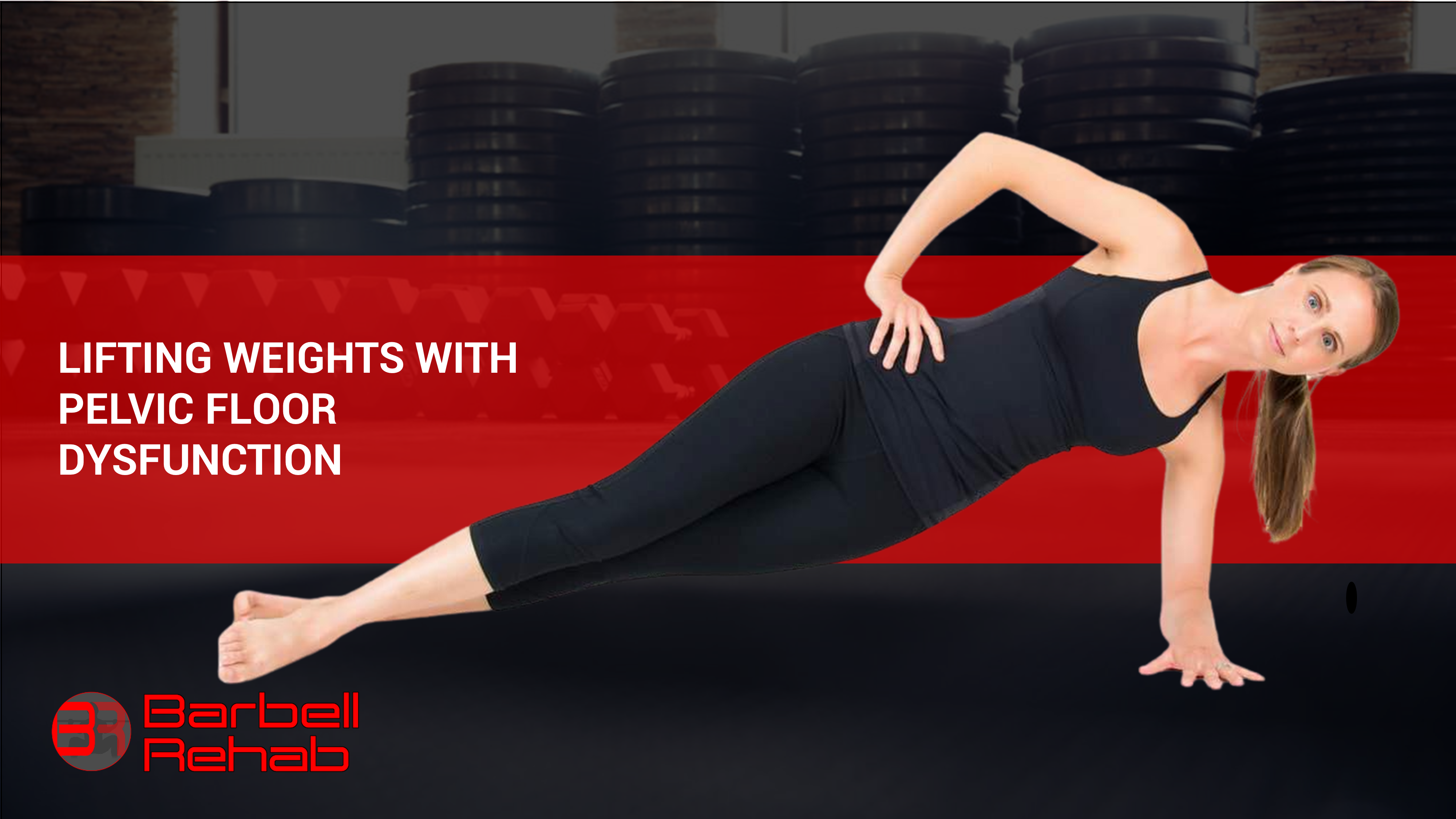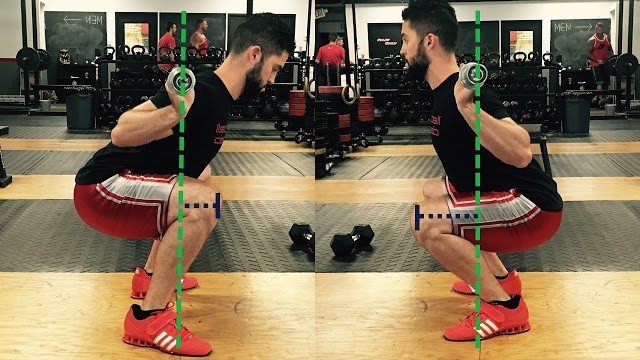Often associated with increasing strength and performance, the barbell can also be a great tool for rehabilitation purposes. The barbell loads basic human patterns, such as the squat and hip hinge. These are movements performed by people EVERYDAY.
After receiving my Doctorate in Physical Therapy just 3 days ago, I'm now ecstatic to have the opportunity to gather some of the best minds in the rehabilitative community to compile this article. These exercises weren't chosen by the authors because they are "innovative" or "different"...they were chosen because they are EFFECTIVE.
These are exercises you might frequently see in your gym, and that was done ON PURPOSE. I am a firm believer that therapeutic exercise should be based on the very same strength & conditioning principles used by "gym bros" and elite athletes alike. This is the most effective way to cause structural adaptation. Without further ado, here are the BEST barbell rehab exercises!
Barbell Romanian Deadlift
One of the most important basic human movement patterns in life is the hip hinge. The hip hinge is a beautiful pattern to perfect, since it applies across the entire spectrum of health from rehabilitation to performance. Moreover, it has real-life applications in overall function and movement. Enter the Barbell Romanian Deadlift (RDL) exercise.
The Barbell RDL is a great exercise to incorporate in rehabilitation for teaching the hip hinge, because it forces the patient to:
- Engage their core and create spinal stability
- Sit their butt back and load their posterior chain muscles through tissue tolerance.
- Actually feel their hamstrings stretch under load, which would undoubtedly help to end the “my hamstrings are tight syndrome.”
- Utilize efficient motor control of the lumbopelvic region.
This is EXACTLY why we are pretty big advocates of the barbell in rehabilitation.
Credit: Dr. Zak Gabor and Matthew Ibrahim
Barbell Hip Thrust
There's no question that the glutes are some of the single most important muscles in the body due to their anatomical location, size and multi-faceted actions, but are you training them directly like you should be? Simply put, the glutes need to be overloaded with heavy loads, and one of the most effective ways to do that is with the hip thrust.
Training into hip extension, the glutes are targeted directly through nearly a full range of motion, making the hip thrust a great muscle builder, but also a cornerstone for bulletproofing yourself against lower back pain and hip dysfunction.
Credit: Dr. John Rusin
Barbell Seal Row
Horizontal barbell rows are an often under-utilized training tool than can bring serious value to your training/prehab/rehab protocols by building strength in the posterior shoulder and back, while also being a nice complement to often overemphasized vertical pulling.
Traditional bent-over barbell rows are great for teaching isometric core stability in a hinge position while building strength in the erector spine and lats. For a less stressful variation for the spine and core demands, try a seal row variation.
Elevate a bench to stabilize the trunk while focusing on a stable shoulder position and a full pull into the abdomen. By eliminating the lower extremities or the use of momentum, seal rows are a highly effective and ultra-challenging movement.
Credit: Dr. Mitch Babcock
Barbell Overhead Carry
Carries, as a group, provide a wide variety of benefits and should be considered when building upper extremity strength training and rehab programs. This exercise can build bigger shoulders, a stable core, and a more prominent serratus anterior. Additionally, the stability component of this exercise can directly benefit overhead athletes and serve to improve overhead function in the non-athlete population.
The overhead barbell carry is the best bang for your buck upper extremity barbell exercise in its ability to strengthen the shoulder musculature while maximizing scapular positioning/stability and overall conditioning.
Credit: Dr. Frank Benedetto
Half-Kneeling Landmine Press
The half kneeling landmine press is performed with the barbell. It’s basically an overhead press type pattern, but you’re not going into full shoulder flexion. Instead, you’re only going about half way. I’ll get down in half kneeling, hold the end of a barbell, and you’re just going to press overhead.
This is my go to exercise when I’m ready to really start adding some weight after a shoulder injury and getting the athlete loading up the press. Because we’re not going into that full overhead positioning, a lot of times athletes will tolerate load a little bit better.
If you’re temporarily doing all their pressing with the landmine position, add some weights to the end of the barbell to increase that, and then get them back to doing strict press, push press, and jerks again.
Barbell Landmine Reverse Lunge
Barbell landmine reverse lunges are an excellent variation to the standard reverse lunge, which should be part of most rehab programs aimed at improving functional strength and independence with ADL's. The barbell landmine reverse lunge is a scaled version of the standard reverse lunge.
Programming a reverse lunge will require approaching not just the knee or low back, but looking at the ankle, hip, and thoracic spine. The aim of using a barbell landmine variation is for the offset weight. With the weight being asymmetrically loaded and moving in an anterior position from the body, there is a required amount of total body stability and motor control.
Credit: Dr. Mario Novo
Deadlift
The hip hinge movement is arguably the most important fundamental skill that our clients should have and the barbell deadlift is the ultimate strength-specific progression of the hinge. With many variations, modifications and regressions available, it is appropriate for any level of physical therapy client – right from acute care to the low back pain client to the elite athlete.
Some would argue that deadlifting is too advanced for most therapy clients, but I would strongly disagree. As whole body strength is our most general adaptation, deadlifting builds the perfect foundation for more advanced and task specific training.
The key, as with any exercise, is to find the variation that best suits the client at the time and progress appropriately. Deadlifting is a lifelong skill that can be progressed for years and suits a hybrid therapy-strength model perfectly.
Banded Bench Press
The barbell bench press exercise is a well-recognized staple exercise for good reason. It’s a great way to train the primary pushers of the upper body, including the pectoralis group, the deltoids, and the triceps. The barbell bench press can be modified to increase its application to a rehab program.
One problem with the traditional bench press is that many people complain of shoulder pain at the bottom portion of the lift. While lowering the weight certainly can help, this option is inferior if strength is the goal. By attaching anchored elastic resistance bands to the barbell, we can manipulate external load throughout the range of motion.
With this option, the bands are SLACKED at the bottom of the lift, thereby reducing stress on a potentially painful shoulder and TENSIONED at the top of the lift where the shoulder can more efficiently handle load. This is a great way to modify barbell exercises in later stages of rehab programs!
Credit: The Prehab Guys





